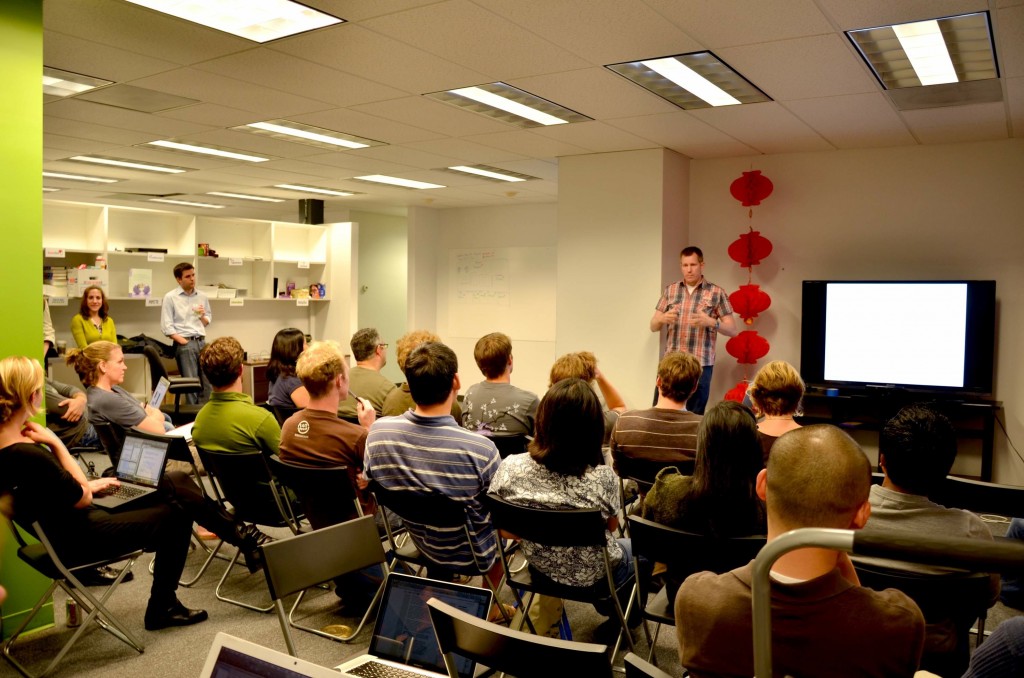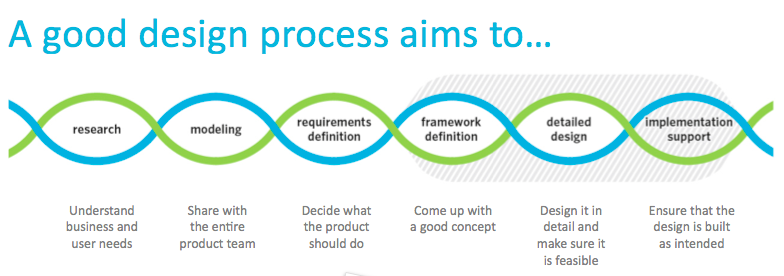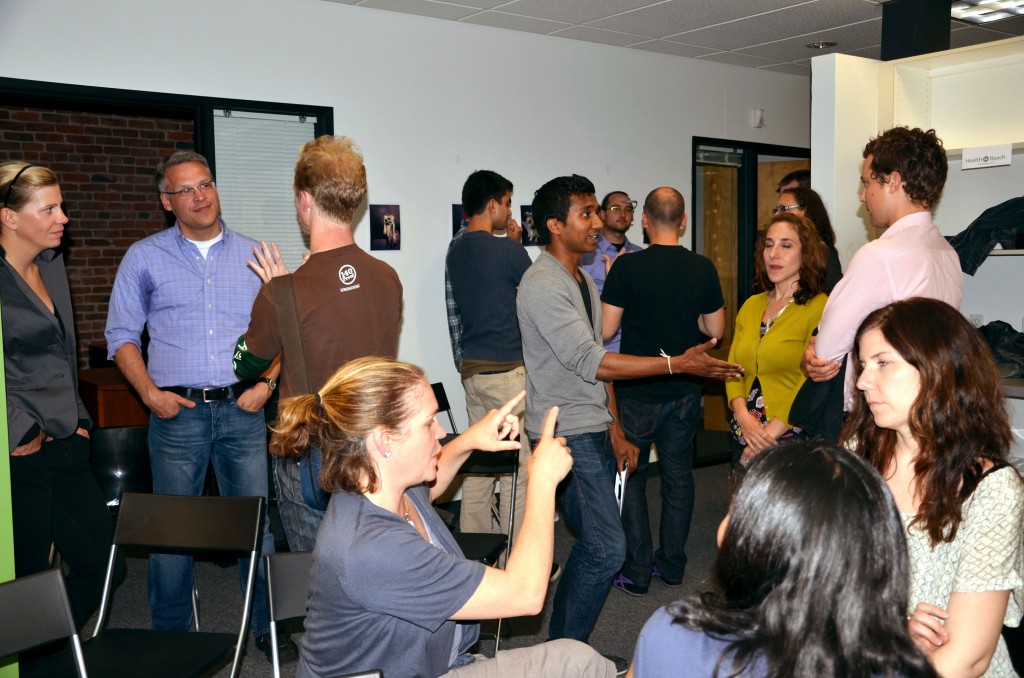Cooper Workshop: The Process of Design
Week one of our nine week design crash course with Cooper Design kicked off with a bang last night. The Cooperistas are generously sharing their expert experience in both design and health care with our startups to help them build amazing products through weekly workshops, their top notch curriculum and office hours.
Our first class was an introduction to the key theories and processes of design. The Cooperistas began by defining the concept of design itself, which they described as “thinking before building.” Adopting this mentality is vital to making attractive and, more importantly, useful products that fit the needs and personalities of users. And while design has the nasty habit of filling the time it’s given, it pays off to spend as much time as you can on the front end to prevent the need for complete reconstruction later. Here’s how the process breaks down:
1) Research Start to define the problem in qualitative ways by utilizing research methods to understand the target user’s needs and emotions, business needs and target desires.
2) Modeling Make sense of the data by sorting and analyzing it to create scenarios, personas, and goals for the product.
3) Requirements Definition Define the key requirements of the product to meet the needs and goals of the users within each seniors.
4) Framework Definition Begin to plan how the product will actually function to meet the requirements of each scenario and goal. Focus on getting the big parts working.
5) Detailed design Fill in the details such as graphics and content of the big plan.
6) Implementation Support See how the product works and doesn’t work. Take the evidence and make improvements.
Throughout the design process it is best to have two people working through the problems (read more on design loneliness). At Cooper, one generates the ideas and other works to elaborate and find holes in the ideas. By using another person as a sounding board, flaws are uncovered earlier in development. At the startup stage, it is typically impossible to hire two designers, but it is crucial to separate yourself from the work and consult others to find ways to improve.

Tune in next week for answers to some of our big questions:
- How do you present large amounts of health data in a manageable and effortless way?
- How do we attract and retain users to take time with our products?
- How do we show that our products are credible and utilitarian while still being friendly and accessible?
- Where does design fit into lean startup models with little funding and even less time to get a product up and running?
Suggested Reading
Show Me the Numbers by Stephen Few
Designing for the Digital Age
by Kim Goodwin, foreword by Alan Cooper


